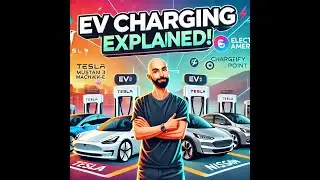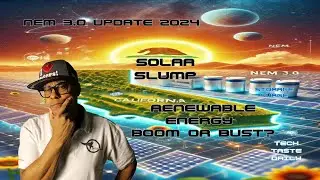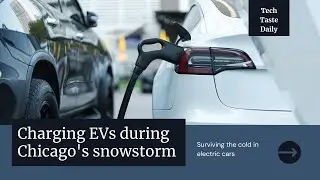Understanding EV Charging: Battery Sizes, Ranges, and Charging Rates
Understanding EV Charging: Battery Sizes, Ranges, and Charging Rates
Electric vehicles (EVs) are becoming more popular, offering a sustainable alternative to traditional gasoline-powered cars. A key aspect for EV owners is understanding battery sizes, ranges, and charging rates, which affect how quickly they can recharge. This article will explore the battery sizes, ranges, and charging rates of popular EVs, compare various charging networks, and highlight how Tesla’s charging infrastructure stands out. We’ll also discuss recent moves by oil companies entering the EV charging market.
Popular EVs: Battery Sizes, Ranges, and Charging Rates
1. **Nissan Leaf**:
Battery: 40 kWh and 62 kWh
Range: 149 miles (40 kWh), 226 miles (62 kWh)
Charging Rate: Up to 100 kW with DC fast charging
2. **Chevrolet Bolt EV**:
Battery: 65 kWh
Range: 259 miles
Charging Rate: Up to 55 kW with DC fast charging
3. **Ford Mustang Mach-E**:
Battery: 68 kWh (Standard), 88 kWh (Extended)
Range: 230 miles (Standard), 300 miles (Extended)
Charging Rate: Up to 150 kW with DC fast charging
4. **Hyundai Kona Electric**:
Battery: 64 kWh
Range: 258 miles
Charging Rate: Up to 100 kW with DC fast charging
5. **Volkswagen ID.4**:
Battery: 77 kWh
Range: 275 miles
Charging Rate: Up to 125 kW with DC fast charging
Charging Networks and Their Capabilities
Several public charging networks are available to EV owners, each with varying capabilities:
1. **Electrify America**:
Charging Rate: Up to 350 kW
A broad range of speeds, serving all modern EVs.
2. **ChargePoint**:
Charging Rate: Typically up to 125 kW, with some stations reaching 350 kW.
3. **Blink**:
Charging Rate: Up to 150 kW
Offers a mix of Level 2 and DC fast chargers.
Tesla’s Charging Infrastructure
Tesla’s Supercharger network, now the **North American Charging Standard (NACS)**, is fast and widely recognized. All major EV manufacturers plan to adopt this standard:
1. **Tesla Model 3**:
Battery: 54 kWh to 75 kWh
Range: Up to 353 miles
Charging Rate: Up to 250 kW with V3 Superchargers
2. **Tesla Model Y**:
Battery: 75 kWh
Range: 326 miles
Charging Rate: Up to 250 kW with V3 Superchargers
3. **Tesla Model S (New)**:
Battery: 100 kWh
Range: 405 miles
Charging Rate: 250 kW with V3 Superchargers
4. **Tesla Model X (New)**:
Battery: 100 kWh
Range: 348 miles
Charging Rate: 250 kW with V3 Superchargers
Tesla is also introducing V4 Superchargers, which will offer even faster charging. NACS is becoming the universal standard for North America.
Recent Developments in Charging Infrastructure
*Shell and Volta*
Shell acquired Volta, known for its charging stations at malls and grocery stores. This move will expand Shell’s presence in the EV charging market, adding more convenient locations for EV drivers.
*BP and BP Pulse*
BP Pulse recently purchased 100,000 Tesla Superchargers, integrating them into BP gas stations. This setup will allow drivers to charge while accessing BP's convenience stores, making the experience more user-friendly.
Comparison of Charging Rates
Comparing Tesla’s North American Charging Standard with other networks:
**NACS (V3 Superchargers)**: Up to 250 kW (with V4 expected to exceed this)
**Electrify America**: Up to 350 kW
**ChargePoint**: Up to 125 kW, with some stations at 350 kW
**Blink**: Up to 150 kW
While Electrify America offers the highest potential charging rates, Tesla’s NACS provides more consistency, making it the preferred choice for many EV owners.
Conclusion
Understanding the battery sizes, ranges, and charging rates of electric vehicles is essential for EV ownership. Tesla’s North American Charging Standard stands out for its efficiency and integration, and Shell and BP’s recent moves promise even more convenient charging options in the future. As the EV market grows, advancements in charging technology will further improve the driving experience.



















